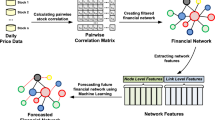Abstract
Correlation estimates for returns between individual properties are subject to large inherent uncertainties due to limits on the amount of data that is likely to be available for the foreseeable future. After allowance for correlation sampling error, it is impossible to distinguish on an ex ante basis between the risk-reduction capabilities of mean-variance portfolio selection models and naive diversification without regard to property type or geographical location. The naive portfolio diversification strategies of typical institutional real estate portfolio managers are rational responses to limitations on the informational content of statistical analyses of historical real estate data.
Similar content being viewed by others
References
Chesire, L., E. Oldis, and E.S. Pearson. (1932). “Further Experiments on the Sampling Distribution of the Correlation Coefficient,” Journal of the American Statistical Association 27, 121–128.
Cole, R., D. Guilkey, M. Miles, and B. Webb. (1989). “More Scientific Diversification Strategies for Commercial Real Estate,” Real Estate Review 19, 59–66.
Efron, B., and R.J. Tibshirani. (1986). “Bootstrap Methods for Standard Errors, Confidence Intervals, and Other Methods of Statistical Accuracy,” Statistical Science 1, 54–77.
Fisher, R.A. (1915). “Frequency Distributions of the Values of the Correlation Coefficient in Samples from an Indefinitely Large Population,” Biometrika 10, 507–521.
Fisher, R.A. (1921). “On the ‘Probable Error’ of a Coefficient of Correlation Deduced from a Small Sample,” Metron 1, 3–32.
Gayen, A.K. (1951). “The Frequency Distribution of the Product-Moment Correlation Coefficient in Random Samples of Any Size Drawn from Non-Normal Universes,” Biometrika 38, 219–247.
Geltner, D.M. (1993). “Temporal Aggregation in Real Estate Return Indices,” Journal of the American Real Estate and Urban Economics Association 21, 141–166.
Geltner, D.M., R.A. Graff, and M.S. Young. (1994). “Random Disaggregate Appraisal Error in Commercial Property: Evidence from the Russell-NCREIF Database,” Journal of Real Estate Research 9, 403–419.
Giliberto, S.M. (1990). “Equity Real Estate Investment Trusts and Real Estate Returns,” Journal of Real Estate Research 5, 259–264.
Graff, R.A. (1995). “The Impact of Annual Real Estate Appraisals on Sample Correlations Computed from Quarterly Returns.” Working paper presented at American Real Estate Society annual meeting, Hilton Head Island, SC.
Graff, R.A., M.S. Young, and R.J. Schoenberg. (1995a). “Limitations on the Accuracy of Markowitz Optimization: The Efficient Frontier as a Family of Sample Statistics.” Working paper presented at American Real Estate Society annual meeting, Hilton Head Island, SC.
Graff, R.A., M.S. Young, and R.J. Schoenberg. (1995b). “Mean-Variance Efficient Portfolios: Fool's Gold in the Investment Strategy Treasure Chest” Working paper.
Gyourko, J., and D. Keim. (1992). “What Does the Stock Market Tell Use About Real Estate Returns?” Journal of the American Real Estate and Urban Economics Association 20, 457–485.
Hartzell, D.J., J. Hekman, and M. Miles. (1986). “Diversification Categories in Investment Real Estate,” Journal of the American Real Estate and Urban Economics Association 14, 230–254.
Hartzell, D.J., D.G. Shulman, and C.H. Wurtzebach. (1987). “Refining the Analysis of Regional Diversification for Income-Producing Real Estate,” Journal of Real Estate Research 2, 85–95.
Hotelling, H. (1953). “New Light on the Correlation Coefficient and its Transforms” (with discussion), Journal of the Royal Statistical Society (Series B) 15, 193–232.
Johnson, N.L., and S. Kotz. (1970). Continuous Univariate Distributions, Vol. 2. Boston: Houghton Mifflin.
Kendall, M.G., A. Stuart, and J.K. Ord. (1991). Kendall's Advanced Theory of Statistics, Vol. 2. New York: Oxford University Press.
Levy, H., and H.M. Markowitz. (1979). “Approximating Expected Utility by a Function of Mean and Variance,” American Economic Review 69, 308–317.
Liang, Y., F.C.N. Myer, and J.R. Webb. (1996). “The Bootstrap Efficient Frontier for Mixed-Asset Portfolios,” Journal of Real Estate Economics 24, 247–256.
Lin, C.-C., and G.S. Mudholkar. (1980). “A Simple Test for Normality Against Asymmetric Alternatives,” Biometrika 67, 455–461.
Liu, C.H., D.J. Hartzell, and T.V. Grissom. (1992). “The Role of Co-Skewness in the Pricing of Real Estate,” Journal of Real Estate Finance and Economics 5, 299–319.
Louargand, M.A. (1992). “A Survey of Pension Fund Real Estate Portfolio Risk Management Practices,” Journal of Real Estate Research 7, 361–373.
Miles, M., and T. McCue. (1984a). “Diversification in the Real Estate Portfolio,” Journal of Financial Research 7, 57–68.
Miles, M., and T. McCue. (1984b). “Commercial Real Estate Returns,” Journal of the American Real Estate and Urban Economics Association 12, 355–377.
Myer, F.C.N., and J.R. Webb. (1994). “Statistical Properties of Returns: Financial Assets Versus Commercial Real Estate,” Journal of Real Estate Finance and Economics 8, 267–282.
Pearson, E.S. (1929). “Some Notes on Sampling Tests with Two Variables,” Biometrika 21, 337–360.
Wheaton, W.C., and R.G. Torto. (1989). “Income and Appraised Values: A Reexamination of the FRC Returns Data,” Journal of the American Real Estate and Urban Economics Association 17, 439–449.
Young, M.S., and R.A. Graff. (1995). “Real Estate is Not Normal: A Fresh Look at Real Estate Return Distributions,” Journal of Real Estate Finance and Economics 10, 225–259.
Young, M.S., and D.W. Greig. (1993). “Drums Along the Efficient Frontier,” Real Estate Review 22, 18–29.
Author information
Authors and Affiliations
Rights and permissions
About this article
Cite this article
Graff, R.A., Young, M.S. Real estate return correlations: Real-world limitations on relationships inferred from NCREIF data. J Real Estate Finan Econ 13, 121–142 (1996). https://doi.org/10.1007/BF00154052
Issue Date:
DOI: https://doi.org/10.1007/BF00154052



